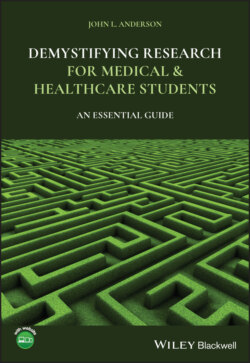Читать книгу Demystifying Research for Medical and Healthcare Students - John L. Anderson - Страница 47
Example 3: Urban Sound Planning in Brighton and Hove
ОглавлениеA colleague at BSMS, Harry Witchell, worked with Brighton and Hove City Council to help solve a common urban problem – that of safety in tunnels, or underpasses, specifically the Brighton Beach Tunnel. In the past, there were problems with public safety because of anti‐social behaviours which led to the tunnel's closure. In an attempt to try to make this a ‘more inviting and safer’ environment, due to increases in its use, an experiment was carried out. Video cameras and a sound system were installed in the tunnel.
The music interventions were played between the hours of 07:00 pm and 07:00 am on Thursday nights, Friday nights, and Saturday nights; for the duration of the pilot study, the tunnel was left open all night on these nights. Playlists of traditional, archetypal representatives of classical, jazz, and contemporary dance music (and silence) were cycled repeatedly to tunnel users, most of whom passed through the music intervention in approximately 30 seconds; the music was chosen to be non‐aversive, and the played sound level was measured to have a LAeq ranging from 68 to 81 dB(A).
Extensive data were gathered in the form of video files; based on motion sensing, over 15,000 filmed episodes were recorded, with almost all of these having one or more individuals moving in the tunnel (Easteal et al., 2015).
So, in this natural space, it was possible to introduce one of four sound interventions:
classical music;
jazz;
contemporary dance music; and
silence.
‘Participants’ were naïve members of the public who were passing through the tunnel. There was no randomisation as such, but the four conditions (classical music; jazz; contemporary dance music; and silence) were equally cycled, so there was a ‘random’ effect in terms of exposure to each of these. All participants were unknown – they were anonymous. The results were interesting.
Classical music seemed to lessen loitering when compared to silence or other music. Music with a faster tempo led to faster walking speeds. The researchers also noted an unexpected effect of music – dancing in the tunnel. Also, in a daytime experiment, ‘brief exposure to music led to an increase in charitable donations to collectors for the Martlets Hospice’.
They concluded that ‘At the end of the experiment, no vandalism or weather damage occurred to any of the equipment, suggesting that this intervention strategy can work in an open public space at night.’
I like this experiment. It's nice to have an experiment which notes an unexpected result – dancing! It demonstrated a good partnership between the Local Authority and the University; and it gave meaningful results which had an immediate practical application.
Note: There is no requirement for REC approval for studies which are ‘naturalistic observations’ of people. Filming in public – as long as no individuals can be identified in any publications or presentations of the results – does not raise any untoward ethical issues.
